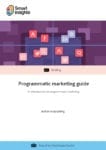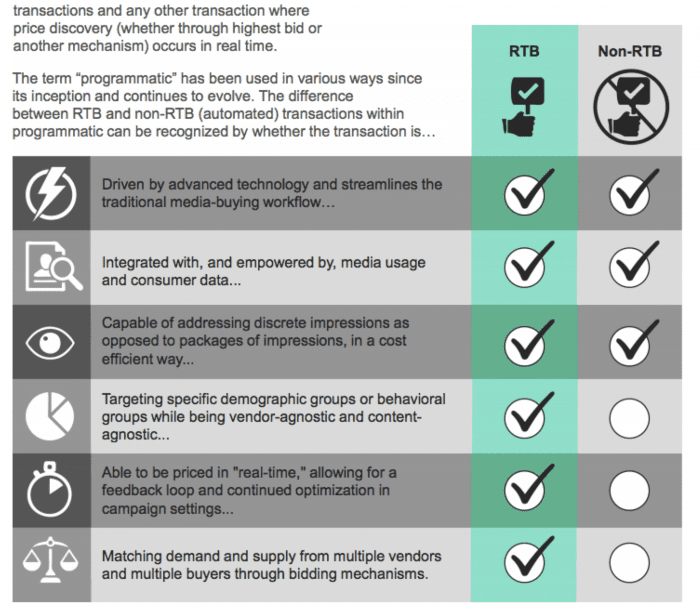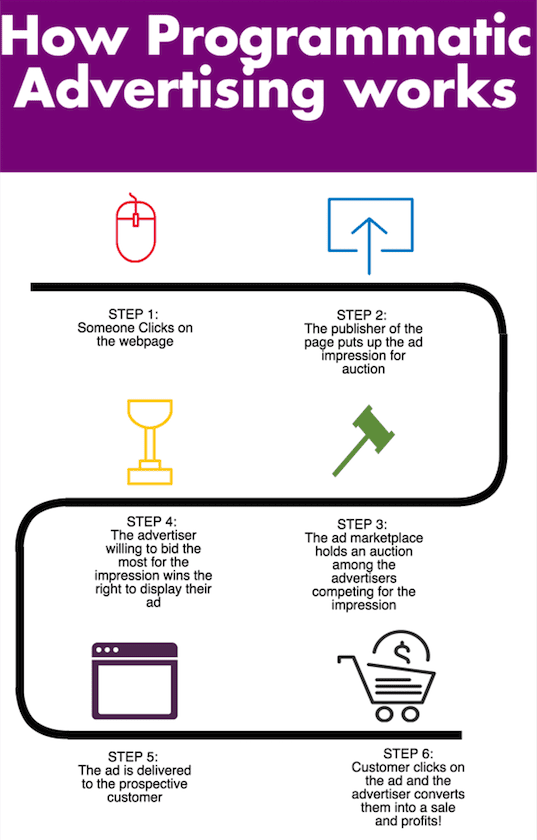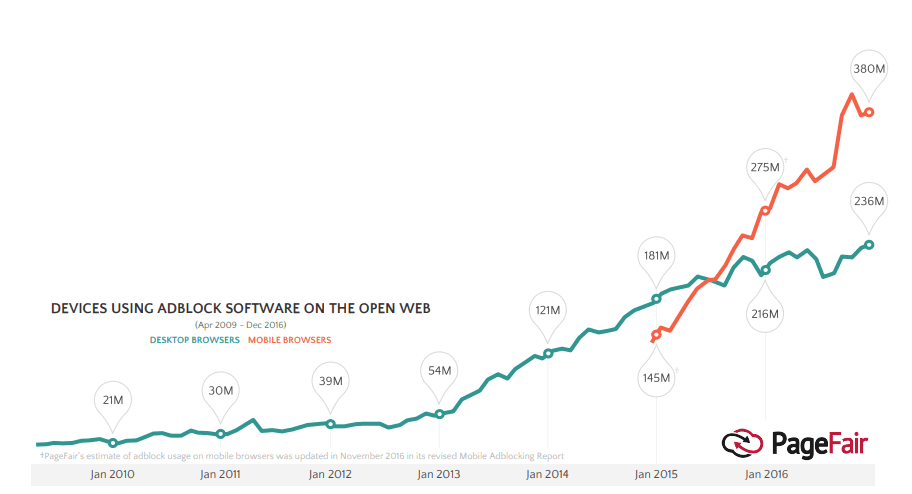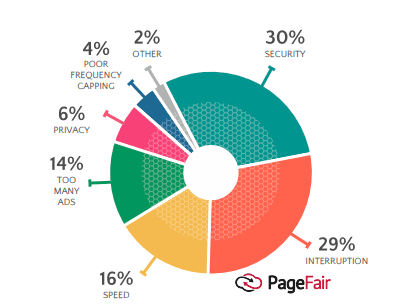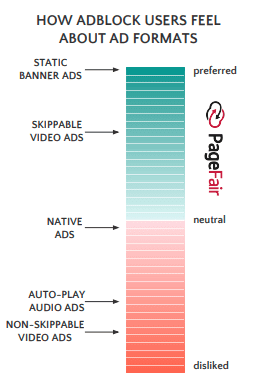Widely tipped to be the future of digital advertising, how is programmatic marketing defined and what are the opportunities?
Programmatic marketing is seen as the future of advertising on the web, with Google targeting 60% of digital advertising budgets spent on Programmatic by next year. According to Forrester, programmatic will account for the majority of all digital advertising spending over the next few years.
The only thing standing in the way of this change is marketers’ lack of knowledge of the process and reluctance to give up previous ways of purchasing ads in favour of the complex yet extremely effective instant, automated bidding process used in programmatic marketing. A little knowledge can go a long way, so we thought an introduction to the concept of programmatic marketing would be useful for digital marketers. But what is programmatic digital marketing?
This post covers just a handful of the benefits and potential opportunities of programmatic marketing. We also have a ‘Programmatic Marketing Glossary‘ to aid readers in their understanding of different terminology and definitions. For a more in-depth look at what programmatic marketing is, the potential benefits, and how to get started with programmatic, see our new guide for all members.
Forecasts for Programmatic Digital Marketing
The Magna Global Programmatic Intelligence report gives forecasts for programmatic by format from 2014 to 2019. They estimate that by 2019 it will be 50% of all advertising, which is less than the Forrester estimate, but still a significant growth.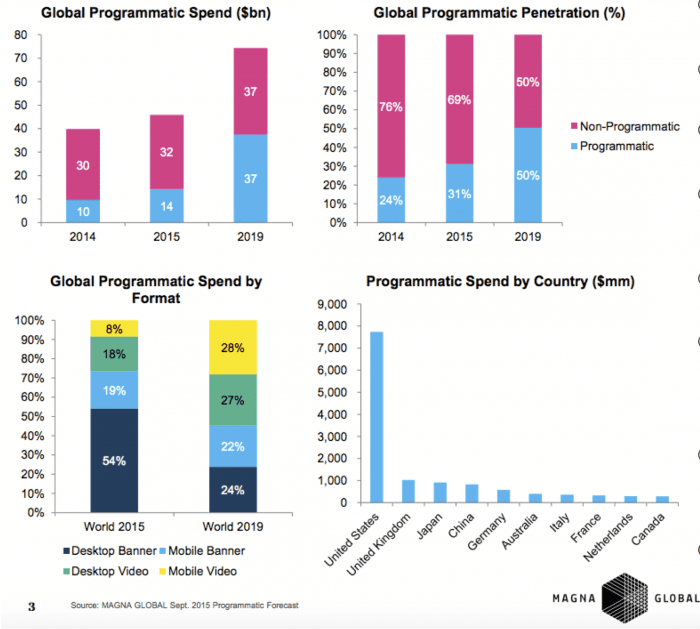
Defining Programmatic Marketing
Because it involves millisecond long auctions during page loading times via algorithms, programmatic marketing can at first glance seem a baffling concept, but when boiled down to its simplest form it is in essence quite simple. We define Programmatic Marketing as:
Programmatic marketing is automated bidding on advertising inventory in real time, for the opportunity to show an ad to a specific customer, in a specific context.
‘Programmatic Marketing’ or advertising is a general term, so it’s best to divide it based on whether it involves Real-time Bidding (RTB) or not. Often it is only considered to be real-time transactions to bid This summary, also from the Magna Global report is useful to show the differences.
Need more information about Programmatic Marketing and Paid Media strategy?
Smart Insights has a toolkit dedicated to paid media strategy to help increase online reach and awareness. Learn best practices to improve your ROI using Google AdWords, Social media and Display Ads. Our guides include:
Or view our FREE 10 costly AdWords mistakes guide.
How does it Programmatic Marketing work?
When anyone clicks on a web page that has advertising space that is configured for programmatic advertising, the publisher of the page puts up an ad impression for auction in an ad marketplace. The ad marketplace then runs an auction among advertisers interested in displaying an ad to that specific customer that just click on the page. There may be many advertisers competing in this auction, and whichever one ultimately is willing to bid the most wins the auction and then their ad is displayed to the customer when the page loads.
Because the process is automated and the maximum price each advertiser is willing to bid for the impression has already been programmed in, the auction can be completed within the milliseconds it takes for the page to load. Our simple infographic takes you through 6 steps that explain how programmatic marketing works.
What are the advantages of Programmatic Marketing?
Programmatic marketing opens up a series of opportunities, which would not be possible if ad placement was done manually, as it has been done in the past. It allows advertisers to procure digital media without having to pre-negotiate a price, so they pay only for the relevant impression that they actually receive. They can also sign up for a minimum number of impressions or a minimum budget, which makes digital advertising more flexible, and they can buy digital media across publishers, which reduced administration costs.
But the opportunities are much greater than just making ad buying easier and more flexible. Because programmatic marketing means bids are arranged for each individual accessing the site people can be targeted to a far greater extent than before.
Using customer data, Programmatic technology can identify what resonates with each individual and target him or her on the sites on the sites they are most likely to engage with and at the time they are most likely to engage.
Ad blockers effect on Programmatic Advertising
With the advancement of Programmatic ads, consumers are becoming frequently aware of their personal data usage and ads that “stalk” them across the internet. Thus, a popularity in adblockers has risen within the last couple of years. Reasons for using an adblocker vary depending on a user’s personal concerns and which country they reside in. As an overview of the state of adblock usage in 2017/18:
Why do users user adblock software?
With this growing concern over data security, marketers will need to become more approachable and evolve their advertising. Some publishers are now not allowing users to view their site at all if they are using adblockers. However, restricting the number of retargeted ads will limit the feeling of “stalking”, which may prove more effective in gaining users trust and removing the negative stigma surrounding online ads.
Global programmatic ad spend
This is why customer data is becoming so highly valued (one of many reasons), and why programmatic advertising is growing so fast – it was projected to become where the majority of non-search digital ad spend went by the end of 2015. It was revealed at the end of 2017 advertisers will have spent an estimated £3.39 billion on programmatic trading. This is a 23.5% rise from the year before. Programmatic spend now equates to 79% of all UK digital ad spend, as reported by MarketingTech.
According to a study from the World Federation of Advertisers, Programmatic is most popular in North America, with 31% of digital budgets allocated to it in 2017/18. Those less keen on automated buying are Latin America and China, both are allocating it 20% of digital spend.
